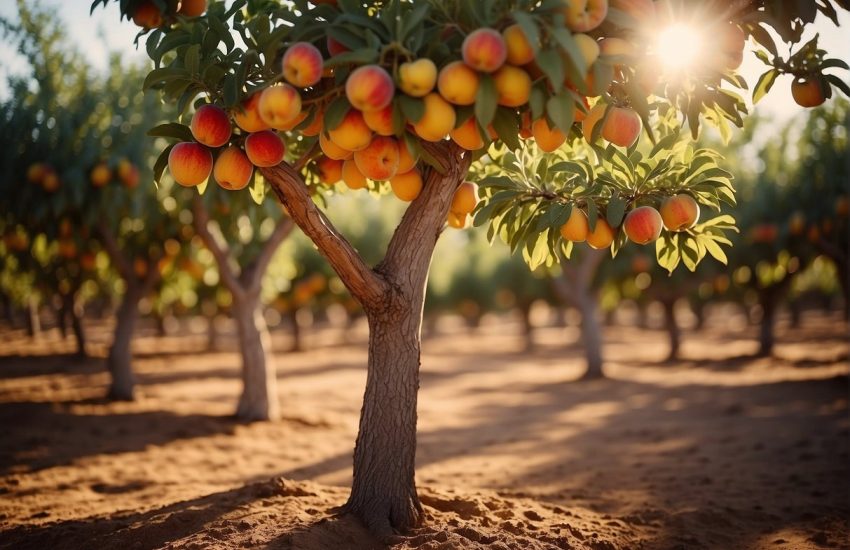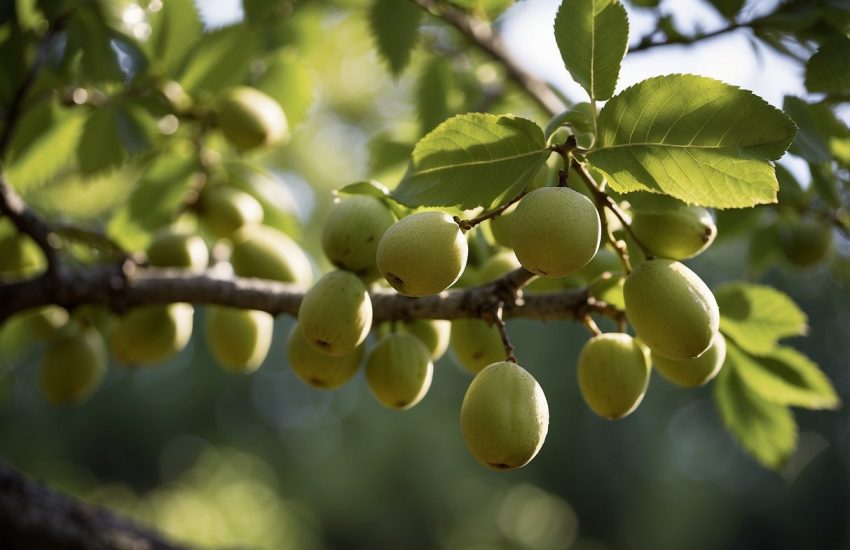Best 6 Olive Trees To Grow In California
It is an attractive tree that grows very well in most of California, and it is one of the most popular trees in the world.
When it comes to growing olives, Californians love the sun, and once they are established, they are usually extremely drought tolerant.
There are many varieties of olive trees that can endure several degrees below freezing with little damage. Before harvest, however, temperatures below about 29**12F will freeze the fruit, making it unsuitable for oil extraction in the Fall and early Winter before harvest.
When olive trees are first planted, the pattern of irrigation needs to be close to the trunk of the tree so that it is able to water the roots of the tree.
Irrigation patterns should be moved away from the trunk and closer to the drip line as the tree grows, in order to encourage the roots to spread.
The majority of olive trees grown in California are evergreen small trees that usually grow to a height of about 20 feet tall.
California is characterized by olive trees flowering early in the spring and ripening the fruits from October through January.
Maurino Olive Tree
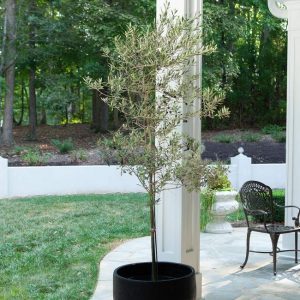
Maurino Olive Trees, originating from Tuscany, but grown in the Golden State in a compact, manageable form, are ideal for windy areas, tight spaces, and other limited spaces.
It’s not only known for its bushels of delectable olives and medium yield, highly-regarded production of olive oil, it’s also suitable for planting in hedgerows for a lush appearance, as well.
As well as that, the Maurino is made to adapt to the landscape of your Golden State since it was grown right here in California.
If trees are planted in the ground, they can reach a height of 20 to 30 feet, but when they are planted in containers, they are able to endure season after season and stay smaller in size (especially with judicious pruning).
Even though they do require a pollinator in order to produce, they are highly reliable and perfectly suited for partnering with the Pendolino, Leccino, or Frantoio Olive Trees.
Leccino Olive Tree

Leccino Olive Tree is a selected tree for its vigorous growth and early fruit ripening. This is one of the many reasons (or two) why the tree stands out.
For starters, it’s one of the most versatile varieties on the market because it can be planted either in the ground or in containers.
Since it is grown right here in California, it will be the perfect addition to your California landscape.
As a result, the Tuscan-native Leccino is now produced specifically for the Golden State.
Olive trees of the Leccino variety reach a height of 20-30 feet in the ground, but when they are pot-planted, they are able to survive season after season and remain a more manageable size (especially with judicious pruning).
In spite of the fact that they need a pollinator to perform, they’re reliable, and their oil is mildly fruity and good.
Italian Olive Tree
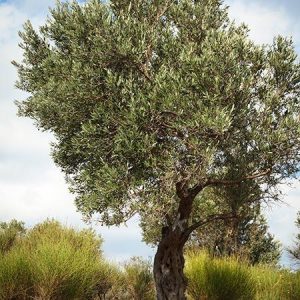
You are going to love this Italian Olive Tree because it adds a taste of the Mediterranean to your favorite dishes.
The plump purple-green olives are delicious eaten as table olives when they have been cured and smoked, but there are several ways you can use the tasty fruit.
The plump purple-green olives can be used to flavor salads, sauces, and pasta dishes.
Making your own olive oil or canning them is a great way to enjoy them throughout the year.
You can expect to get one to five pounds of olives from this process. You can expect to get one quart of olive oil from each tree once it’s mature.
(When you compare the cost of store-bought oil with the cost of making your own, it is a big savings.)
An Italian Olive is characterized by its dark gray-green leaves and its semi-pendulous growth form. As the tree grows in spring, it produces small white, fragrant flowers that mature into plump, juicy fruits that are medium-sized and oval in shape.
In the months of September to December, you will be able to harvest olives that are ready for harvesting from late September to late December as olives ripen gradually and the tree keeps producing.
It is easy to harvest Italian olives by placing a sheet underneath the branches and shaking each branch individually, or the whole tree if it is potted.
The Italian olive tree is a very hardy tree that can withstand harsh weather conditions. It can be grown outdoors in zones 8 through 11.
It is possible to place them in a container to enjoy inside during the winter months if you live in Zones 4-11. The plants prefer soil that drains well, with full to partial sunlight.
In other words, this tree is self-fertile, which means that it will produce fruit without the help of an accompanying tree, although you will get a much bigger harvest if you have more than one tree around for cross-pollination.
Pendolino Olive Tree

A Pendolino olive tree can provide you with early-ripening fruit for the production of light, delicate olive oil.
Native to Tuscany and grown in California, Pendolino olive trees tend to fruit earlier.
Despite the fact that it grows slower than many other varieties, the Pendolino is an easy variety to maintain and an excellent choice for acclimating to a California landscape since it is grown there.
Although Pendolino Olive Trees reach heights of 20 to 30 feet when they are planted in the ground, they remain smaller in stature when they are planted in containers (especially after careful pruning) for season-to-season growth.
We recommend using a pollinator for maximum production, particularly the Leccino olive trees and the Maurino olive trees, as they are partially self-fertile.
Little Ollie® Dwarf Olive Tree
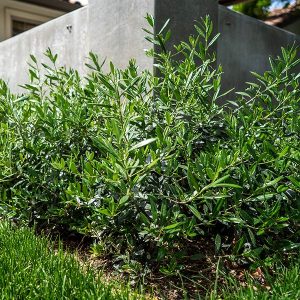
Choose this reliably fanciful option and make your friends and family happy with it.
We have been inspired to achieve domestic bliss with the help of the versatile charms of our Little Ollie® Dwarf Olive (Olea europaea ‘Montra’).
Eventually, it will naturally grow into a rounded puff of fine, wispy leaves with a fine texture.
These trees have long, lance-shaped leaves that are cypress green on top, but ironically, their silvery undersides show when the wind blows their slender branches in the wind.
Enjoy Little Ollie Dwarf Olive’s foliage display all year long by planting it in a spot that gets plenty of sun. You can do whatever you like with this plant, no matter how much or how little you do with it.
The durable nature of this choice allows it to withstand shearing, so it can be considered a heat-tolerant alternative to the traditional good looks of Boxwood. This can then be shaped into some fantastic shapes for a patio tree or tight accent tree.
If you store it in a container for many, many years, it will last for a very long time. This endearing selection is the perfect way to add some charm to your balcony.
Mission Olive Tree
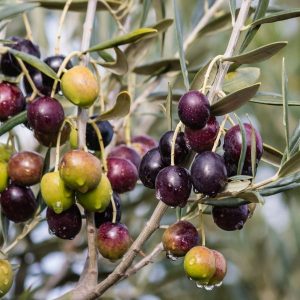
A tree as useful as this one is on a mission to become the most prized specimen in your yard.
Olive europaea ‘Mission’ (Olea europaea ‘Mission’) is a classic, a self-fruiting olive tree ideal for growing on your property and perfect for harvesting olive oil and curing olives for consumption.
There is no doubt that the Mission Olive Tree is one of the best secrets of some of the world’s best landscape painters.
However, why? It offers a classic Tuscan or Spanish look, adapts well to a wide range of soils and can survive temperatures down to eight degrees Fahrenheit while retaining its pleasant foliage.
Additionally, once Mission has been established, it becomes one of the most drought tolerant plants.
In order to create the traditional appearance of an olive tree from this go-to specimen, it can be grown with a wide, but low canopy. You can either plant it as a vase-shaped tree with heavily branched branches or you can grow it as a bush.
Pruning the olive tree is not as hard as it seems. It can be grown like a topiary in nearly any manner you desire, if you so choose.

